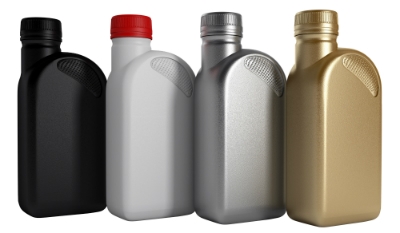A new report says that OEM branded engine oils will see strong growth over the next four years, highlighting the push for service by automakers.
Due to shifting consumer behaviour and OEMs’ desire to capture a greater share of the aftermarket sales and service of their vehicles, genuine oil consumption is projected to grow at a strong compound annual growth rate of 4% through 2022 across all major markets, finds the recently published OEM Genuine Oil Brands and Programs in the Consumer Automotive Segment: Market Analysis and Opportunities report by Kline.
OEM genuine oil includes all engine oils marketed by a passenger vehicle OEM either under the OEM brand name or a trademarked name exclusive to the OEM. Genuine oil is mainly consumed by OEM-franchised workshops and dealerships for servicing new vehicles. Genuine oil consumption is projected to grow for all major OEMs. Toyota leads genuine oil consumption globally, accounting for over 20% of global genuine oil volume in 2017.
OEM genuine oil consumption accounts for estimated 15% of the global PCMO consumption in 2017. Asia-Pacific leads the market, accounting for over 40% of the overall genuine oil demand, followed by North America and Europe. While the vehicle parc in these two mature markets will grow slowly, North America will see the strongest growth in the consumption of genuine oils as vehicle ownership forms and habits are shifting, as well as consumer behavior, driving more vehicles back to dealerships for regular maintenance and service. European OEMs have only recently started to market genuine oils and lag their North American and Japanese counterparts by a significant margin.
“The traditional views of vehicle ownership are starting to give way to emerging trends such as vehicle subscription services which include all maintenance and insurance. OEMs are also investing in ridesharing which could lead to corporate owned fleets serviced by dealerships. The majority of dealerships use genuine oil and, as more customers go back to the dealerships, genuine oil consumption will increase,” comments report manager David Tsui. “Lubricant suppliers will lose out on merchant-branded volume to suppliers of genuine oil, which is typically a major supplier with a multi-year OEM contract. Therefore, PCMO suppliers need to seriously consider bidding for OEM genuine oil volumes more than before,” advises Tsui.
Subscription services are a relatively new trend that many OEMs and mega dealers are exploring. These services are still in their infancy, but as OEMs pilot these programs across mature markets, should they gain traction, this will shift more vehicle service and maintenance into the dealership workshop channel.
With OEMs advancing internal combustion engine technology to meet higher fuel economy and emissions requirements, partnerships with lubricant and additive suppliers are becoming more beneficial in co-developing new technology. This co-development is likely to lead towards divergent specifications and viscosity grades as each OEM pursues their unique path.
OEMs have been actively seeking to capitalize on the lucrative aftermarket for the vehicles they produce and understanding their strategy will be key to lubricant marketers’ plans to grow their own market share. Partnering with the right OEMs in regions where genuine oil is growing the fastest will help lubricant marketers stay ahead of the changing PCMO market.
To listen to key insights from this new study, REGISTER for a webinar on July 17, 2018.


0 Comments